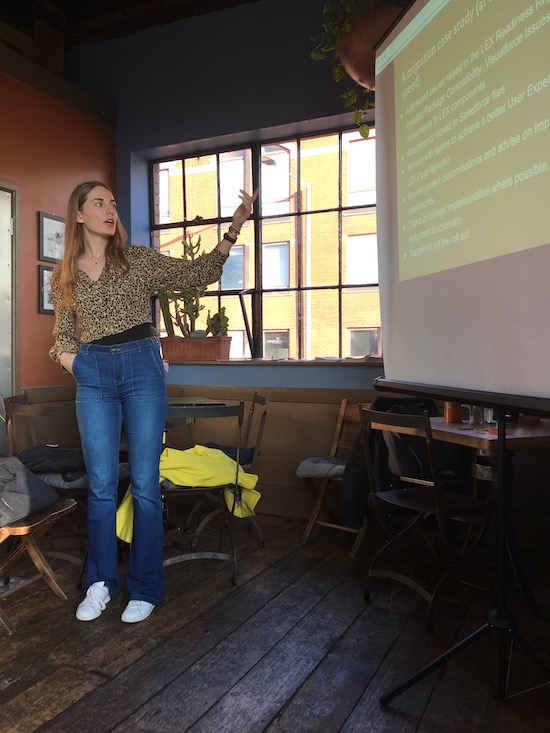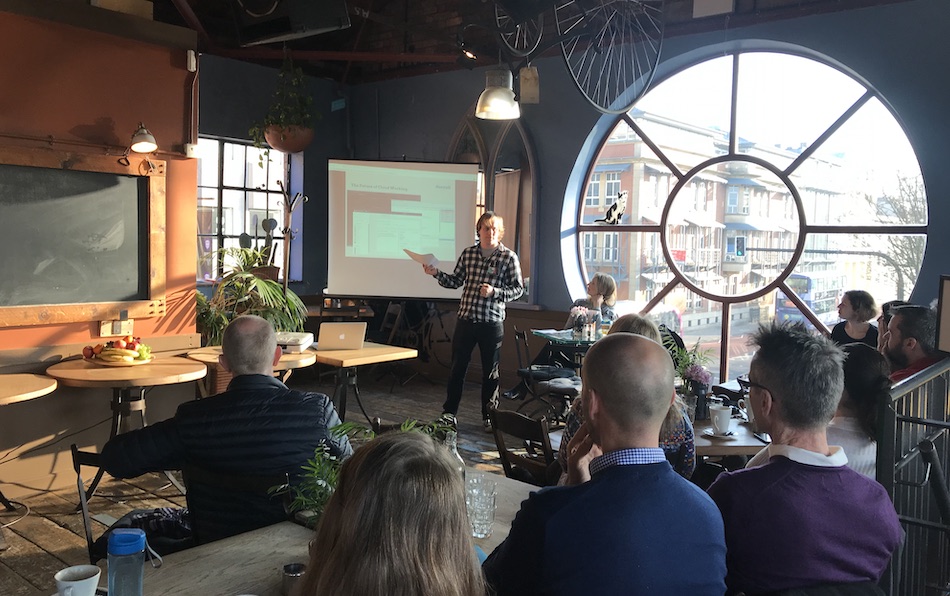Last week, we were happy to welcome a number of businesses in the South West to our breakfast event, Forcewest at Bristol’s famous cycle cafe, Mud Dock. The subject was migrating from Salesforce Classic to Lightning, and the Desynit team covered off a couple of different angles in their presentations. If you were not able to make the event, here is a round up of some of the key insights.
Salesforce Lightning came out in 2015. You may remember it. It was launched to with a huge song and dance at Dreamforce and hailed as The Future of Enterprise Technology. The problem was, it wasn’t really ready. There were considerable product gaps and still had some way to go before you could migrate.
Fast forward to Feb 2019, and now it’s fair to say that Salesforce Lightning is fully formed and completely ready to go. Salesforce are not selling Classic anymore – if you buy a Salesforce licence now you go straight to Lightning. In fact Salesforce are not updating Classic either, the features released with each new platform update are all in Lightning now.
In which case, you would imagine that most businesses had by now made the move to the new platform.
Surprisingly, you would be wrong – the picture is more mixed than that. Our audience at the Forcewest were all on Salesforce Classic, to some degree. About 50% of Desynit’s own customerbase are yet to migrate fully. And another Salesforce consultancy attending our event told us that about 80% of their customers were still working on Classic.
Everett Rogers nailed it in his Diffusion of Innovation theory, back in the 60s. Basically, the idea is that adoption of new, innovative ideas takes place in a predictable curve, as the idea percolates through groups and takes hold. You’ve probably seen the graph. So while the Salesforce Lightning product itself might well have reached maturity, perhaps we are still waiting for the late majority and the laggards to read the news. But, if Everett knew his stuff, then everyone will eventually get there.
So what is the truth? In terms of an actual percentage of Salesforce customers, only Salesforce know the answer to that question, definitively. But what we do know is this: Salesforce Classic is not coming back.
One of the main issues that we have seen customers encounter with their Salesforce migration relates to handling the transition of complex customisation to the new UX. Unfortunately in scenarios which deploy some complexity – possibly even some bespoke Visualforce code – it’s not as simple as switching over to Lightning and getting on with things.
Our Advanced Salesforce Developer, Simon Lawrence, presented on just this topic at Forcewest and blogged about this issue here, as this is really worth exploring in some more detail. The issue is that often these bespoke little corners of your Salesforce org are doing a lot of heavy lifting in terms of business operation, and now you are faced with a complete rethink. Technology has moved on, not just the User Interface, it goes deeper than that. Lightning Components have replaced coded solutions, so it might be time to completely re-engineer what you’ve got in place. The good news is that the result will be far more robust and future-proofed, in terms of scalability and maintainability.
So in summary, tackle these issues now, they are not going to go away. It might be cost effective to talk to Desynit about bringing in some additional technical expertise for these discrete issues.

Her key advice was to start with the tools that Salesforce provide. First port of call us is the Lightning Readiness Report, which allows you to see exactly where you are at the click of a button.
This same report also gives you a helpful estimate on the amount of time this project is going to take – that is, how many hours will you need to sink into this.
Two points..
Firstly, do take the projected number of hours with a pinch of salt. Yes, in theory, you could switch over in a flash. However, as we’ve said before, this is your opportunity to fix those areas of your org that need more attention. That’s going to take some time: not just time actually working away at your user interface, but time spent talking to your Salesforce stakeholders and finding out how they would ideally like to work. Don’t underestimate the importance of this – it’s worth committing some time to this activity.
Secondly, you don’t have to just run this report once. You can run this report before, during and after your migration if you want. It will serve as a handy progress checker.
Finally, this particular insight was one which came up within our wider discussion with our guests once the presentations were over. Bringing in new technology that replaces old is a change project, and needs to be treated as such. Don’t underestimate the importance of communicating to your users – they need to know why you are migrating, what’s expected of them and what’s the benefit to them. Communication is the key word here. We’ve blogged about building an effective comms programme to drive adoption previously here. When you consider that migrating to Salesforce Lightning is in effect a Salesforce (re)implementation, then you can see that all the same rules apply.
Do you have any questions on Lightning Migration? We would really like to hear from you. Post a comment on this blog or get in touch with the Desynit team and we will see what we can do to help. We do offer packages businesses either looking for some support with their transition, or indeed can take on your migration project in it’s entirety. Leave us your details in the form below and we can email you the information.
[pardot-form id=”17105″ title=”Lightning Transition Services”]

Our independent tech team has been servicing enterprise clients for over 15 years from our HQ in Bristol, UK. Let’s see how we can work together and get the most out of your Salesforce implementation.